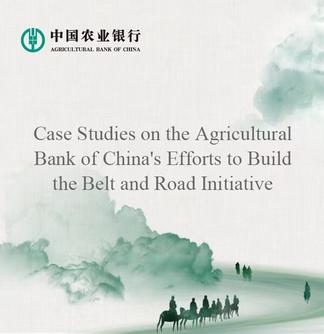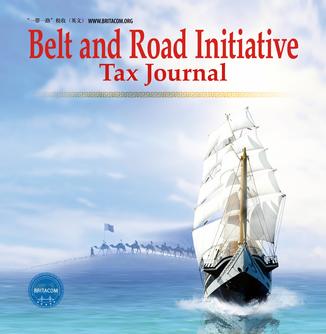KUALA LUMPUR, Oct. 28 (Xinhua) -- China and ASEAN signed the Free Trade Area 3.0 Upgrade Protocol here on Tuesday, marking a new milestone for their deepening cooperation and economic integration.
Analysts said the signing of the upgrade protocol represents an important step toward advancing high-quality, open cooperation between the two sides amid mounting global economic uncertainty. It demonstrates the region's resolution to jointly confront global economic challenges and injects fresh momentum and confidence into regional economic development.
NEW RULES BUILDING
Since 2002, the China-ASEAN Free Trade Area (CAFTA) has progressed from Version 1.0 and 2.0 to the current Version 3.0, reflecting both sides' sustained efforts to advance regional economic integration.
Compared with early focus on tariff cuts and broader market access, the latest upgrade opens a new chapter for institutionalized and modernized cooperation. The CAFTA 3.0 not only includes traditional areas of trade and investment, but also introduces nine new areas such as digital economy, green economy and supply chain connectivity, etc.
Experts said continuous upgrades of CAFTA clearly show how regional economic cooperation has deepened.
Herman Tiu Laurel, president of the Asian Century Philippines Strategic Studies Institute, a Manila-based think tank, said the signing of the protocol is not only another upgrade of the economic and trade relations between China and ASEAN, but also an important milestone in promoting regional economic integration.
Compared with the focus on "tariff reduction" in Version 1.0 and the "facilitation" in Version 2.0, the biggest breakthrough of Version 3.0 is the "shift from mutual tariff reduction to joint rule building," he said.
Tang Zhimin, assistant president at Thailand's Panyapiwat Institute of Management, said Version 3.0, covering digital and green economies, strengthens the foundations for industrial and supply chain collaboration through aligning rules, recognizing standards and interlinking mechanisms.
"This is a joint push to shift from 'quantitative expansion' to 'qualitative improvement,'" said Ng Yih Pyng, president of the Associated Chinese Chambers of Commerce and Industry of Malaysia.
The upgrade showcases the ongoing innovation by ASEAN and China, further combining trade liberalization with institutionalized governance, and shifting the focus toward greater predictability of rules and the aligning of systems, he said.
GROWTH ENGINES
Addressing core issues in global industrial-chain transformation and sustainable development, the CAFTA 3.0 will help expand mutually beneficial cooperation in emerging fields, and facilitate broader and deeper regional economic integration, analysts said.
Xiao Saizi, associate professor at School of Politics in University of Nottingham Malaysia, said the CAFTA 3.0 for the first time incorporates both hard and soft connectivity for emerging areas such as the digital and green economies.
The upgrade protocol effectively links countries' resource endowments, industrial strengths and positions in core value chains, underscoring both sides' resolve to diversify trade cooperation, and demonstrating the strong vitality of inclusive and open cooperation to the world, she said.
Jitkai Chin, an associate professor at Malaysia's Universiti Teknologi PETRONAS, expressed expectations that the CAFTA 3.0 and the Regional Comprehensive Economic Partnership will work in synergy to further advance economic integration.
"I believe China and ASEAN's cooperation in emerging fields such as the digital economy, green energy and industrial upgrading will also drive the region's low-carbon transition and sustainable development, injecting new momentum into the Asia-Pacific's long-term stability and prosperity," Chin said.
WIN-WIN TRADE
As global development stands at a critical crossroads with rising protectionism, intensifying geopolitical conflicts and disruptions to industrial and supply chains, the signing of the CAFTA 3.0 Upgrade Protocol sends a positive signal of openness, cooperation and mutual benefit, observers said.
Muhammad Habib, a researcher at Indonesia's Center for Strategic and International Studies, said the upgrade demonstrates China and ASEAN's shared commitment to defending free trade and regional cooperation.
China is taking concrete steps to support the multilateral trading system, and to build a more stable and inclusive regional economy, he added.
According to Phan Cao Nhat Anh, deputy head of South Asia, West Asia and Africa Research Institute at the Vietnam Academy of Social Sciences, the CAFTA 3.0 is not only an important engine driving the region toward more inclusive and resilient growth, but also will play a key role in strengthening regional economic resilience and withstanding external shocks.
Following a recent survey on the Malaysian market, Liu Baofeng, head of a fruit import-export company based in Hebei Province, north China, said that importing fruits from Southeast Asia has become faster and more convenient these years.
"From customs declaration and clearance to transport, turnaround times keep shortening. With road, air, sea and rail operations running in parallel, supply chains are far more stable and logistics more flexible. Higher customs efficiency means fresh Southeast Asian fruits can reach Chinese consumers much faster," Liu said.




 A single purchase
A single purchase








